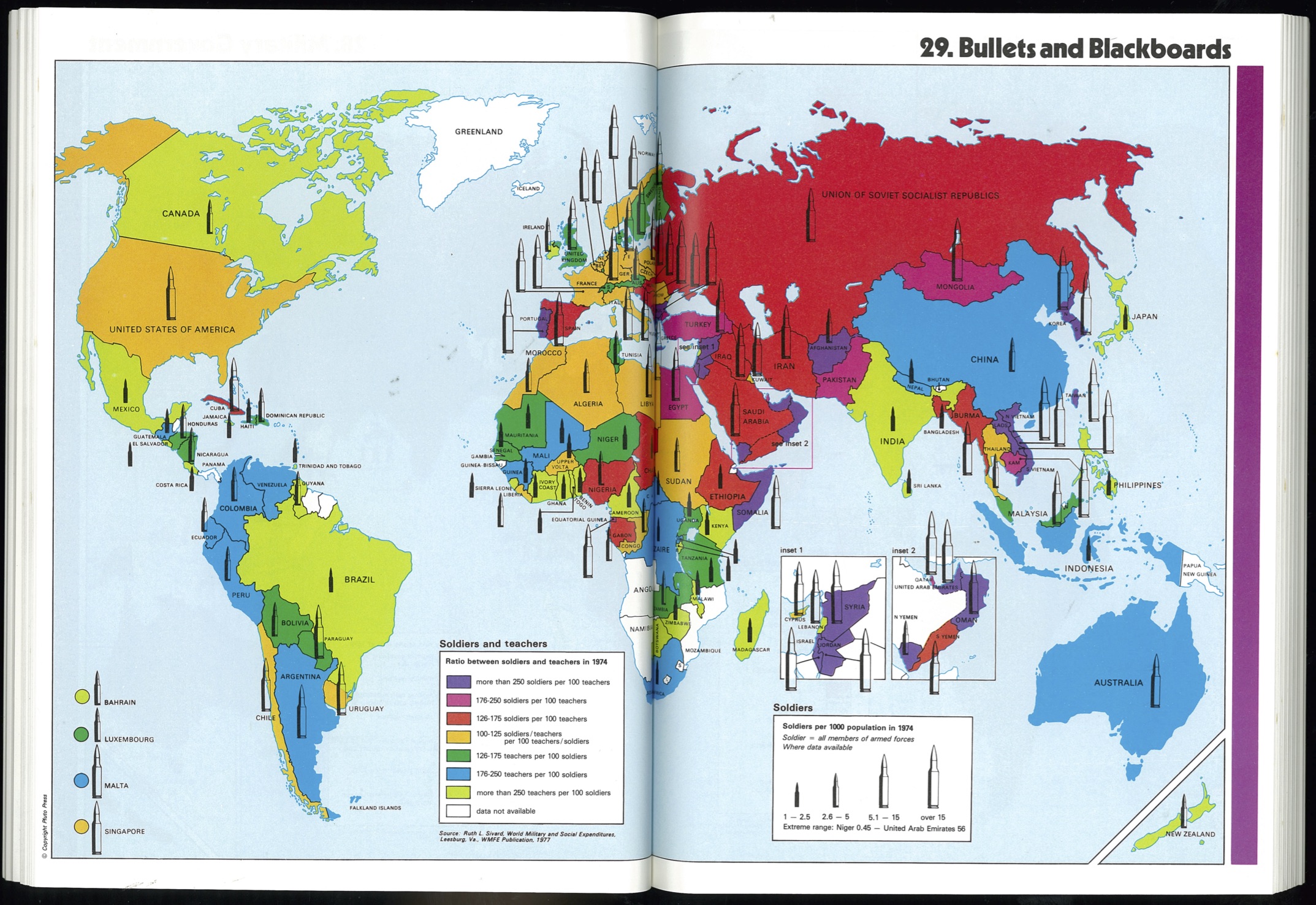

|
This map shows the relative importance attached by states to investment in soldiers and investment in teachers. It also shows the number of soldiers employed by each state in relation to its population.
The ratio of soldiers to population gives no indication to the size of individual armies. For such an impression, comparison should be made with Map 3: The State by Population. China, for example, may have a low ratio of soldiers to population, but so large is its population that it has more soldiers than any other state. Nor does a low ratio of soldiers to population necessarily denote a relatively libertarian regime or a relatively contented populace. The sustenance of oppression or the control of discontent often call on the employment not of soldiers but of special methods (see Map 31: Scourge of the State) and special agents (see Map 27: The State Apparatus).
Particular events may radically alter or at least temporarily distort information on individual states. For example, the overthrow of the fascist regime in Portugal ended a system of military conscription for warfare abroad, which had made Portugal’s ratio of soldiers to population among the highest in the world. And since 1974, the changing situation in South-East Asia produced first a large reduction and then a large increase in the relative sizes of the armies in the area.
HTML last updated on 29 November 2020